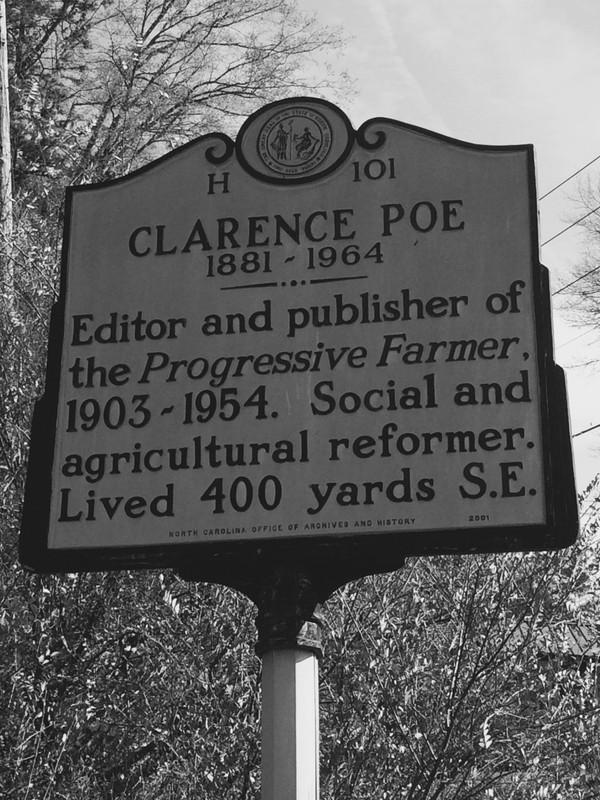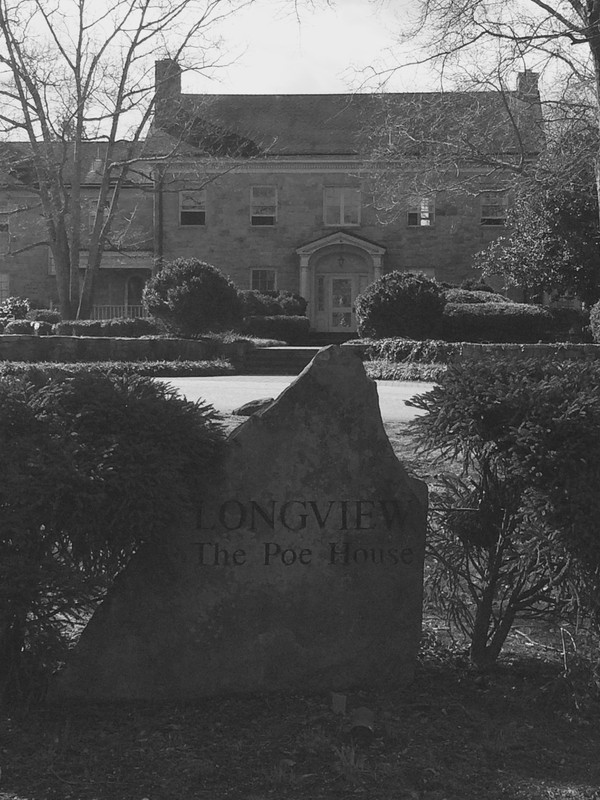Longview - The Poe House
Introduction
Text-to-speech Audio
Images
Historical marker near the Poe House, located off of New Bern Ave/Donald Ross Dr.

View of the front of the home, with engraved marble marker.

View of home from the South East back lawn.

Backstory and Context
Text-to-speech Audio
Clarence Hamilton Poe (1881-1964) was an author, editor, publisher, and owner of the Progressive Farmer periodical, which served the agricultural population of the American South. Poe arose from associate editor of the paper at age sixteen to senior editor and chairman of the board at his death in 1964. Progressive Farmer was an influential publication that grew its circulation from 5,000 readers to almost 1.5 million during its peak years.1 The periodical offered practical advice for farmers and provided everything from poetry to politics and humor.2 In 1903, Poe purchased the struggling paper with three partners and embarked on a strategy of expansion. Over the next three decades, the Progressive Farmer Company (the name chosen by Poe and his partners for the new ownership) would purchase fourteen smaller regional publications and bring them into the Progressive Farmer fold.1 The company's headquarters moved from Raleigh to Birmingham, Alabama in 1911, though Poe remained in Raleigh and directed operations from there.
By the 1930s, Progressive Farmer had become the most influential farming periodical in the South, and Dr. Clarence H. Poe had become a well-respected man in the fields of publishing, agriculture, and education.2 His contemporaries thought highly of him, and he was awarded multiple honorary degrees from universities in the region. Goldsboro, North Carolina editor Henry Belk said of Poe, "If one were asked to name the North Carolinian who has made the greatest contribution to progress and enlightenment, to education and health and improved living, most would name Dr. Poe." Furthermore, Virginius Dabney, Richmond, Virginia, editor, stated, "If a list were drawn up of the half-dozen men who have done most for the South since 1900, it would have to include Dr. Clarence Poe."1
In 1916 Clarence Poe purchased 800 acres of land to the east of Raleigh for a farm and a new residence.3 Architect James Salter was hired to design Poe's new home. When finished, the 4,902-square-foot home would be named "Longview." During its operations, the farm produced dairy, poultry, tobacco, and cotton. After Dr. Poe's death in 1964, the home would be sold, but in 1990 the home was purchased back by the Poe family. In 2011, the Poe family donated the home and remaining land to WakeMed Health & Hospitals, located nearby. WakeMed hospital has expressed interest in expanding their operations onto the Longview grounds.
